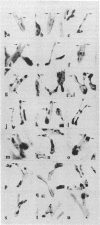Abstract
Studies of N-banded mitotic and meiotic karyotypes of Triticum turgidum L. (2n = 28; AABB) and Triticum timopheevii Zhuk. (2n = 28; AAGG) and hybrids between them, along with observations of meiotic pairing between telocentrics of the AB-genome chromosomes and their respective homologues and homeologues in T. timopheevii, showed that chromosome 4 (m4) of Triticum monococcum L. is present (as 4At) in T. timopheevii but is lacking in T. turgidum. Neither 4A nor 4B pairs with 4At, but 4A pairs with 4G and, for this reason and because of its banding pattern, must be considered a B-genome chromosome. T. timopheevii chromosomes 4At and 3At are involved in a reciprocal translocation, and 2At, 1G, 2G, and 5G are also involved in translocations. Chromosome arm 4BL occasionally pairs with 7G. The satellites are on the short arms of chromosomes 6At and 6G of T. timopheevii and 1B and 6B of T. turgidum. It is suggested that (i) T. timopheevii orginated as an allotetraploid of Aegilops speltoides Tausch/T. monococcum and (ii) T. turgidum was derived from T. timopheevii by introgressive hybridization with an unknown diploid species, which contributed its distinctive cytoplasm, chromosome 4B or a substantial portion of it, and additional chromosome segments. Rapid fixation of 4B in T. turgidum was ensured by cytoplasm-specific transmission.
Keywords: metaphase I pairing, chromosome banding, speciation, Triticum turgidum, Triticum timopheevii
Full text
PDF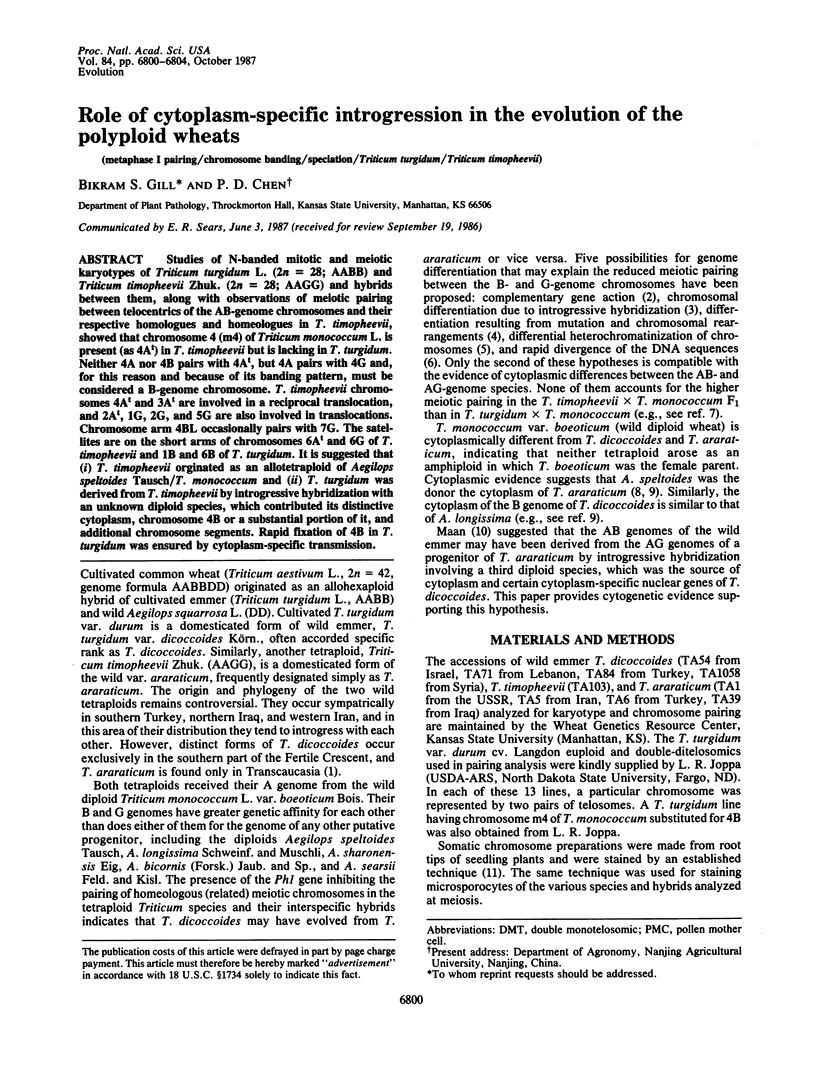
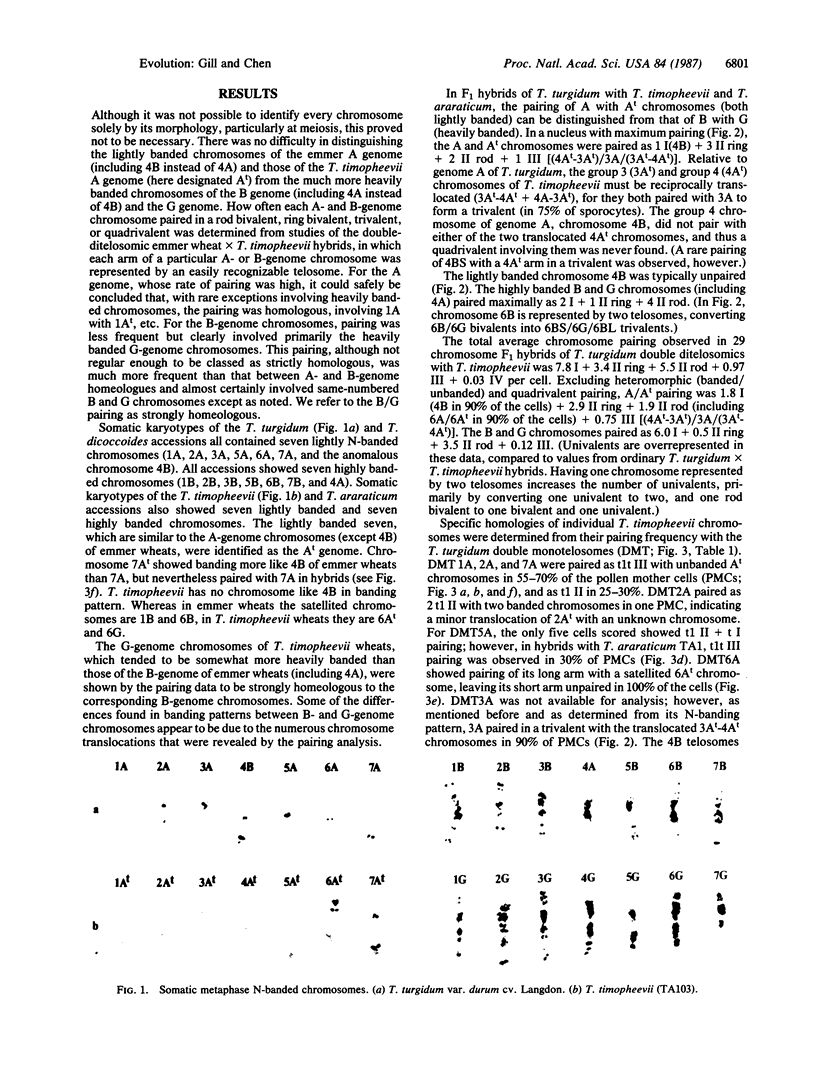
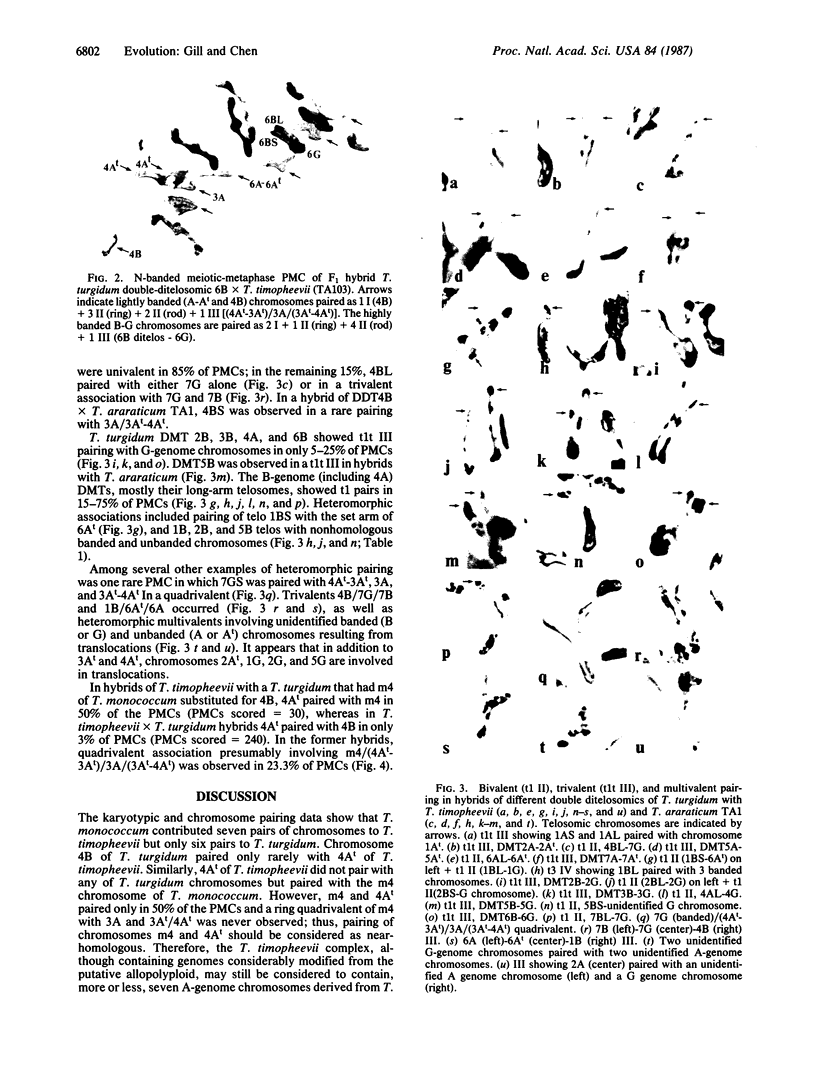
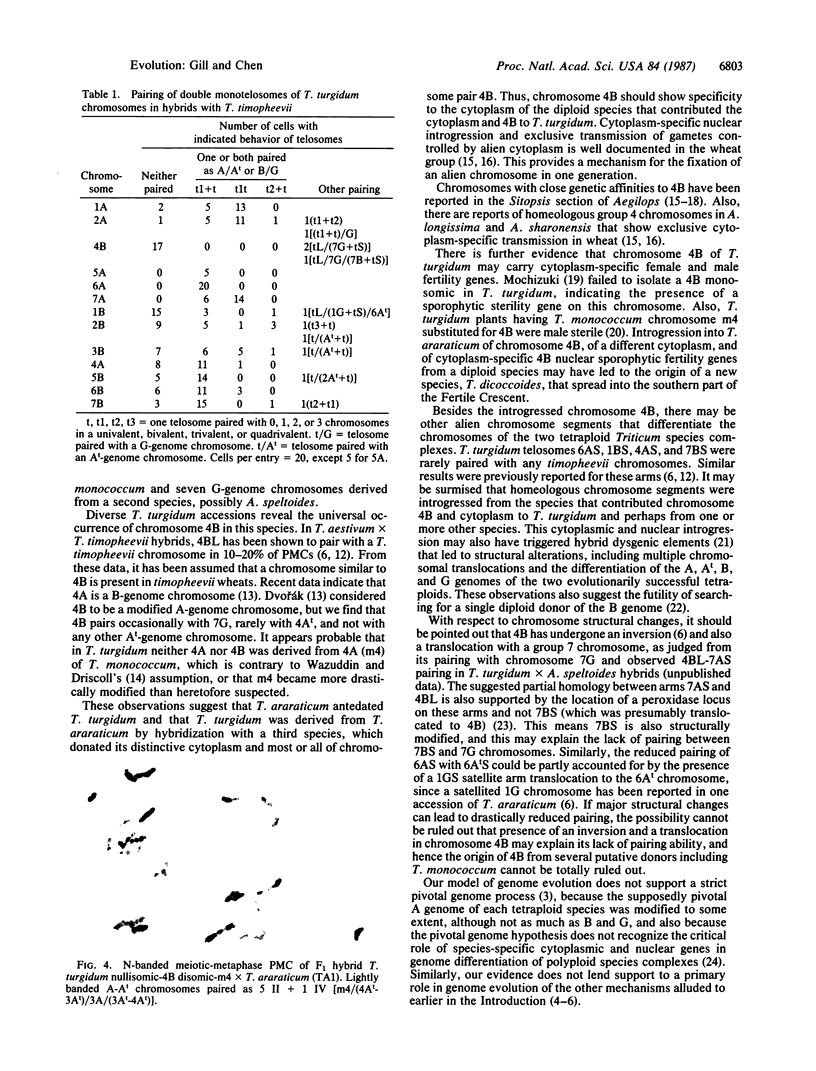

Images in this article
Selected References
These references are in PubMed. This may not be the complete list of references from this article.
- Kimber G., Athwal R. S. A reassessment of the course of evolution of wheat. Proc Natl Acad Sci U S A. 1972 Apr;69(4):912–915. doi: 10.1073/pnas.69.4.912. [DOI] [PMC free article] [PubMed] [Google Scholar]
- Tsunewaki K., Ogihara Y. The Molecular Basis of Genetic Diversity among Cytoplasms of TRITICUM and AEGILOPS Species. II. on the Origin of Polyploid Wheat Cytoplasms as Suggested by Chloroplast DNA Restriction Fragment Patterns. Genetics. 1983 May;104(1):155–171. doi: 10.1093/genetics/104.1.155. [DOI] [PMC free article] [PubMed] [Google Scholar]
- Wazuddin M., Driscoll C. J. Chromosome constitution of polyploid wheats: Introduction of diploid wheat chromosome 4. Proc Natl Acad Sci U S A. 1986 Jun;83(11):3870–3874. doi: 10.1073/pnas.83.11.3870. [DOI] [PMC free article] [PubMed] [Google Scholar]







